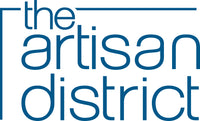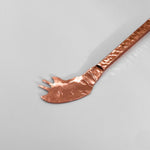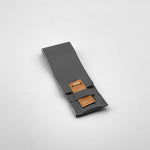


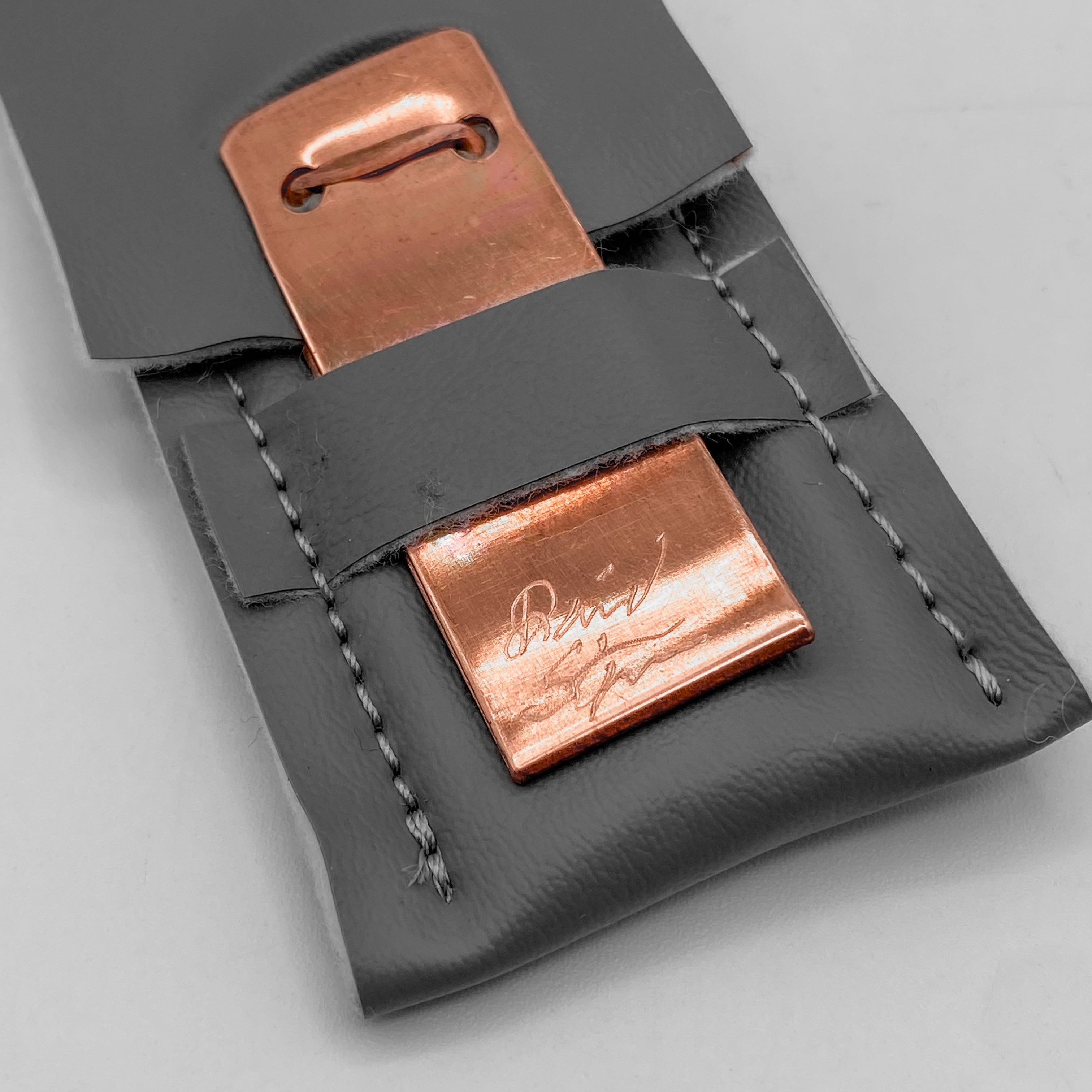
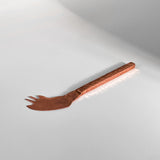
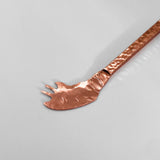
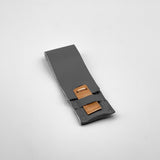
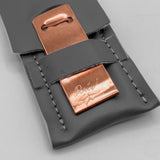
Copper Knife-Fork by David Stepan
Couldn't load pickup availability
- Description
- Artist
- Care Guide
Hand-hammered copper knife-fork. Measuring about 4.5" to 5.5". Wrought from salvaged solid copper bar, it is hammered out and annealed, creating a one of a kind instrument. This piece is individually packed in its own flocked vinyl case.
David Stepan is an artist creating objects in multiple media, primarily wood, metal and stone. While getting a BFA from the University of Calgary he focused his attention on printmaking, especially the abstract decorative surfaces of silkscreen, which he then applied sculpturally. After school he moved to Toronto and created fashion jewelry and art furniture, leading to a long career in custom woodworking. This allowed him to continue to pursue his interests in decorative surfaces and shapes, while satisfying the extraordinary demands of private commissions. Applying his decades of skills to creating delightful and striking pieces remains his passion, currently as represented in more intimate works. Surreal and beautiful mixes of materials transform his charcuterie/cheese boards; and the hammer marks on the copper culinary ware are primitively expressive; he has also rekindled his love for jewelry, exploring metals, shapes, patinae, and imagery.
Their new home in Kempt (Caledonia) Nova Scotia houses their studios adjacent to Kejimujik National Park. Yeah, heavenly, except for the black flies.
Use and care for your copper culinary tools.
The pieces are made from actual copper, this means they can tarnish in your environment and through use. Care involves removing the tarnish, use guidelines, cleaning after service, and finish preservation. Part of our process is treating the tool with a food safe barrier film before shipping to minimize tarnishing. This film is fairly robust and should last some time. The tools may have been handled before they came to be with you, and we recommend cleaning before their first service.
Removing the tarnish
Tarnish is when copper molecules react with other molecules in the air. Of course, you are not required to remove the tarnish before service, it is an aesthetic choice. Removing the tarnish is simply getting rid of those affected molecules. We find the best practice is to submerge the tools in vinegar for only a few minutes, this chemically removes the tarnish. Some very stubborn tarnishes make require rubbing with fine steel wool to remove it. Rinse very well in hot water to remove all the vinegar. Then towel and air dry (the hot water heats the tool, accelerating air drying). We suggest then applying a food safe air barrier to help maintain a bright finish. An example of a food safe barrier is beeswax.
Use guidelines
The tools are for serving charcuterie, hors d’oeuvres, cheeses, etc.. They are not intended for mouthing food. As seen above, vinegars and acids affect copper, and they are present in some foods, so limit their exposure to the copper tools (for instance, tomato sauces, deeply pickled items, etc.). Enjoy the hammered and work hardened edges cutting cheeses, and maintain on a stone if needed. As the tools are sharpened, please exercise appropriate care with use. The specific uses for different instruments can be found on our website.
Cleaning after service
After use the tools must be cleaned. DO NOT CLEAN IN THE DISHWASHER. The detergents used in dishwashers can adversely affect the finish. Wash, by hand, with soap and water to remove solids, oils, and residues. Rinse well, towel and air dry, then apply a food safe barrier finish to minimize tarnishing before their next use. Often, you may have a fabulous party, and you, or your staff may not clean up until the next day. There may be more tarnish than usual; simply employ the vinegar cleaning process, perhaps with the use of fine steel wool, to bring your tools back to a bright shine, followed by applying a barrier.
Finish preservation
Maintaining a bright finish is best achieved by applying a food safe barrier film. We suggest polishing with beeswax.
Copper Knife-Fork by David Stepan
- Related products
